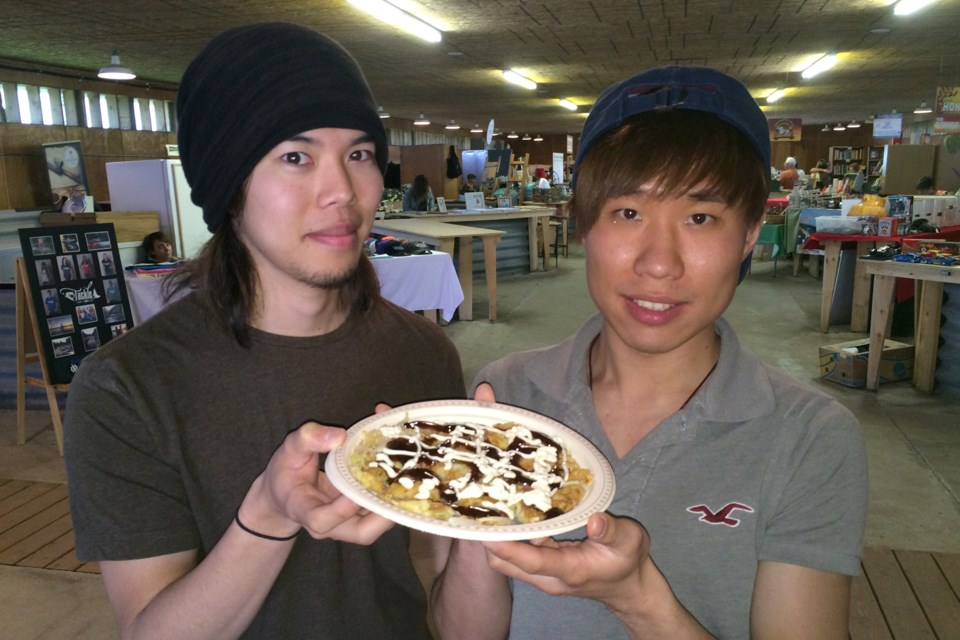According to OkonomiyakiWorld.com, there are 30,000 restaurants in Japan that serve okonomiyaki.
But outside Japan, the website claims, the crispy, savoury delicacy is much harder to find, with only a couple hundred places worldwide offering it.
Sault Ste. Marie's Mill Market is now one of those places, thanks to two Algoma University international students with a hot plate, a spatula and a dream of introducing okonomiyaki to Northern Ontario.
Okonomiyakis are often described as "Japanese pancakes" or "Japanese pizzas."
In fact, they are nothing at all like North American flapjacks or pizza.
The Osaka-style okonomiyakis served up on Sunday by Yuya Omori and Frankie Chan at Mill Market are best compared to a kind of egg-and-wheat-flour latke, with crunchy bean sprouts, shredded cabbage and black pepper fabulously mixed into the batter.
The whole delish thing is drizzled with a lattice of mayonnaise and a umami-packed okonomi sauce.
Omori is from Kyoto, Japan. He's studying sociology at Algoma U.
Chan is from Guangzhou (Canton), China. He's studying accounting.
The two wanted something to keep them busy during the summer months and decided to try offering an item of popular Asian cuisine that wasn't well known in Sault Ste. Marie.
They settled on okonomiyaki, which Omori ate often while growing up in Kyoto.
He had noticed that the griddle-cooked delicacy went over very well at Algoma University's annual Japanese food nights.
In Japanese, yaki means 'grilled or cooked.'
Okonomi means 'what you want' or 'what you like.'
Okonomiyaki, then, can be prepared a thousand different ways to appeal to almost any taste.
"The earliest origins of a basic crepe-like pancake date back to the Edo period (1683-1868) where these were a special dessert served at Buddhist ceremonies called funoyaki," says OkonomiyakiWorld.com.
"Okonomiyaki, in its different variations, started to become more popular during [World War II] when rice became scarce and residents had to be creative in using other more readily available ingredients."
The website lists 24 Canadian restaurants serving okonomiyaki, almost all of them in Montreal, Toronto and Vancouver.
Omori and Chan plan to offer the dish for $5 at Mill Market every Sunday through the summer from 11 a.m. until 3 p.m.
They say their okonomiyaki are monosodium glutamate-free.
If you like it hot, a dash of sass is available on request.
